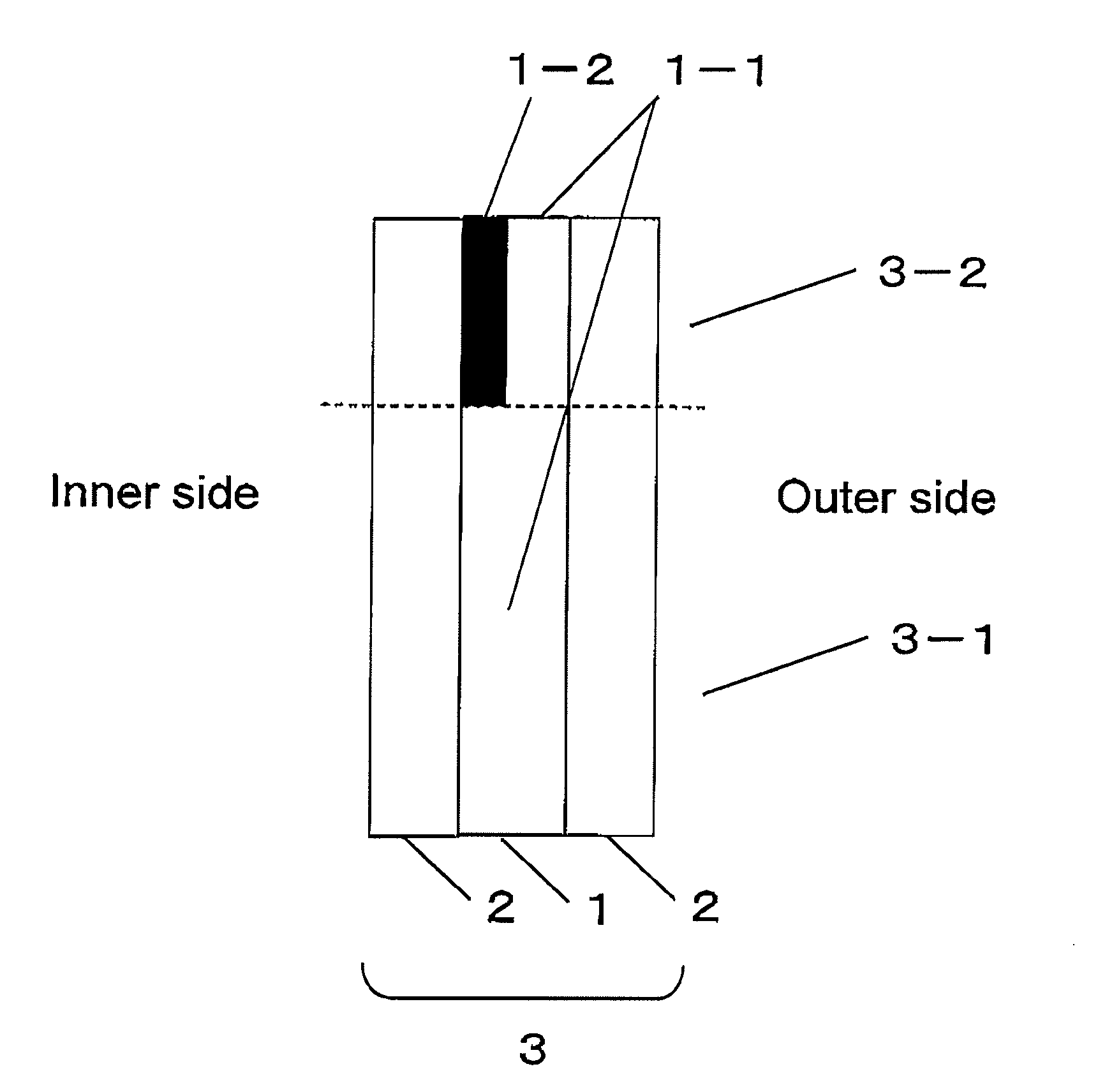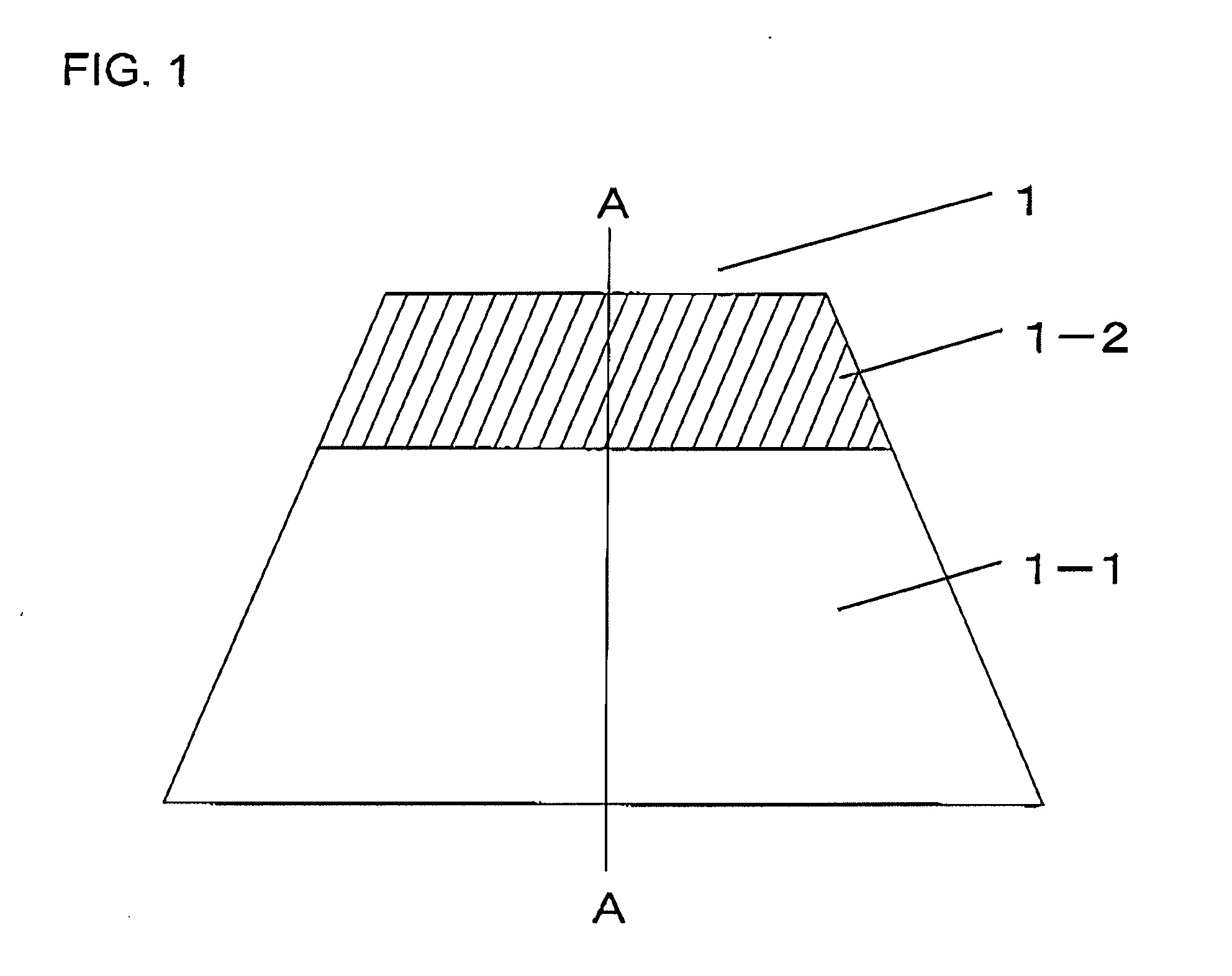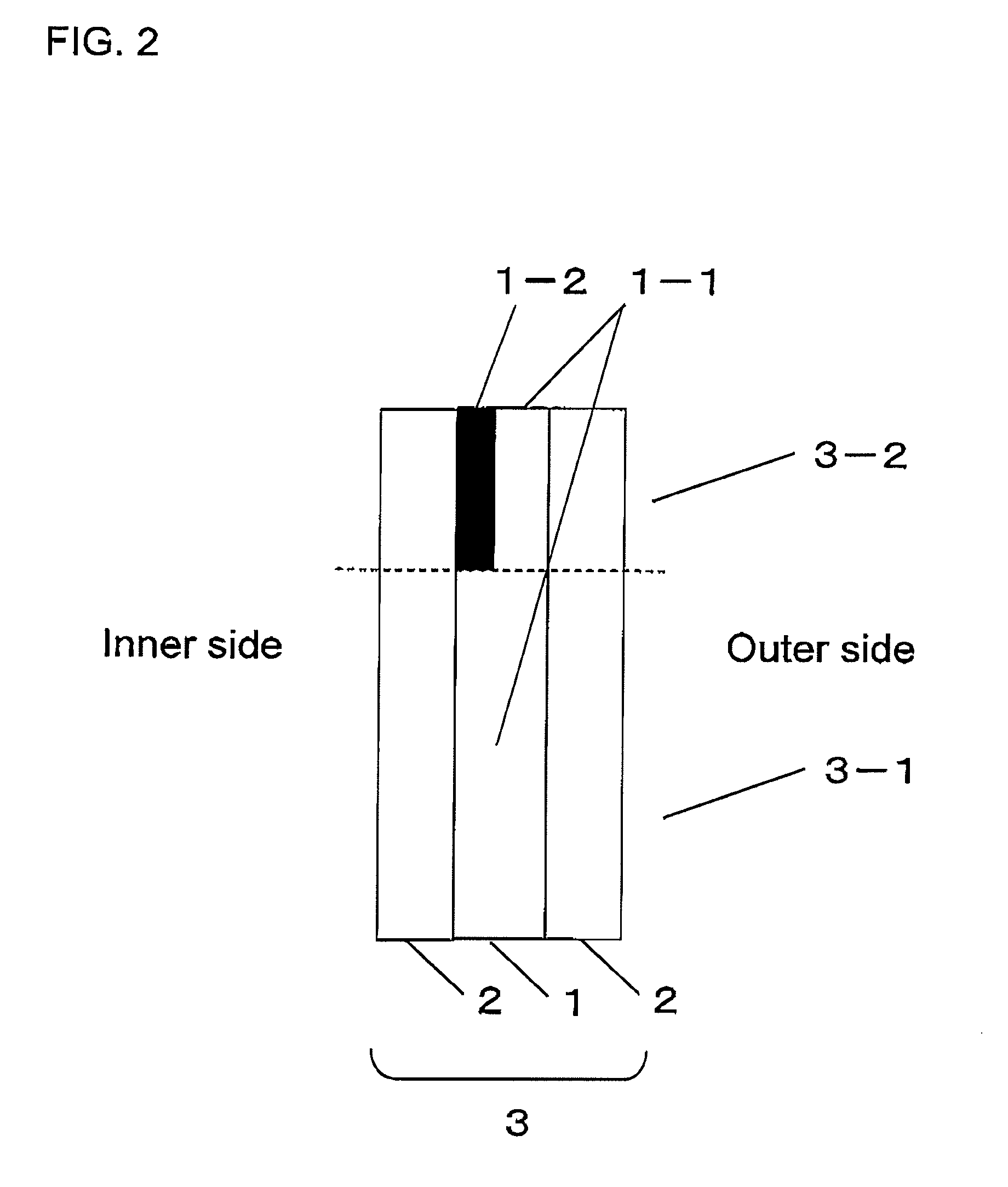Laminated Glass with Shade Band
- Summary
- Abstract
- Description
- Claims
- Application Information
AI Technical Summary
Benefits of technology
Problems solved by technology
Method used
Image
Examples
example 1
[0074]A belt-like region of a rectangular piece of intermediate film (thickness: 0.76 mm) (Saflex, product of Solutia Japan) along a longer side was colored green by use of a dye. The thus-colored piece was employed as an intermediate film for laminated glass.
[0075]Two rectangular green glass sheets (thickness: 2.1 mm) were stuck together with the mediation of the above-produced intermediate film for laminated glass. Sticking of the two glass sheets by use of the intermediate film was performed through the aforementioned conventional technique.
[0076]The light transmittance of the thus-produced laminated glass (first and second regions) was measured by means of a spectrophotometer UV 3100 PC (Shimadzu Corporation) over a wavelength range of 300 to 1,800 nm. FIG. 1 shows the results. Furthermore, visible light transmittance and light transmittance with respect to light beams (wavelengths: 700, 750, 875, and 1,000 nm) were also measured. The results are shown in FIG. 5 and Table 1.
example 2
[0077]The procedure of Example 1 was repeated, except that clear glass sheets were used instead of the green glass sheets employed in Example 1, to thereby produce a laminated glass.
[0078]The measurement was performed in a manner similar to that of Example 1, and the results are shown in FIG. 6 and Table 1.
example 3
[0079]The procedure of Example 1 was repeated, except that the thickness of the green glass sheets was changed from 2.1 mm to 2.3 mm, and an intermediate film (S-LEC, product of Sekisui Chem. Co., Ltd.) was colored by a dye to form a blue band, to thereby produce a laminated glass.
[0080]The measurement was performed in a manner similar to that of Example 1, and the results are shown in FIG. 7 and Table 1.
PUM
| Property | Measurement | Unit |
|---|---|---|
| Fraction | aaaaa | aaaaa |
| Fraction | aaaaa | aaaaa |
| Fraction | aaaaa | aaaaa |
Abstract
Description
Claims
Application Information
 Login to view more
Login to view more - R&D Engineer
- R&D Manager
- IP Professional
- Industry Leading Data Capabilities
- Powerful AI technology
- Patent DNA Extraction
Browse by: Latest US Patents, China's latest patents, Technical Efficacy Thesaurus, Application Domain, Technology Topic.
© 2024 PatSnap. All rights reserved.Legal|Privacy policy|Modern Slavery Act Transparency Statement|Sitemap



